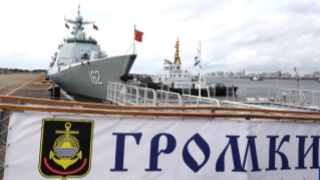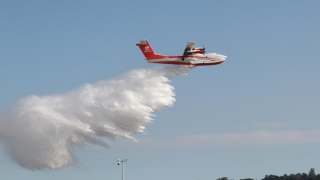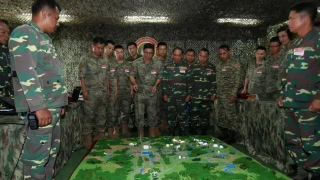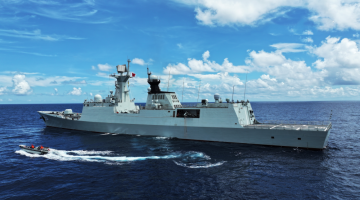
Japan Maritime Self-Defense Force (JMSDF) Takanami-class destroyer takes part in a US-Japan joint exercise.
By Wen Weiru
According to Japanese media reports, the Japan Self-Defense Forces (JSDF) recently participated in the joint space exercise held by NATO for the first time, which represented a microcosm of Japan's constant reinforcement of military cooperation with NATO in recent years. Analysts pointed out that Japan is expanding its military partnership by establishing regular consultation mechanisms, concluding bilateral military agreements and participating in multilateral joint military exercises, in a bid to lay the groundwork for achieving its strategic maneuvers.
Stepping up building bilateral mechanisms
At present, Japan has established the communication and sharing mechanism for military intelligence exchange by signing the Agreement on the Security of Information with 13 countries and organizations. The country has also signed or will sign the Agreement concerning the Transfer of Defense Equipment and Technology with 15 countries to set up a channel for its weaponry export and military technology transfer. Moreover, Japan has entered into or will soon enter into the Reciprocal Access Agreements with Australia, the UK, France and the Philippines to facilitate joint military operations and logistical cooperation with these countries.
Among them, the Reciprocal Access Agreements, as a key component of Japan's overseas military cooperation, replace legal procedures with agreed provisions to streamline the jurisdictional concerns associated with the entry of relevant individuals into the counterpart countries, such as entry and exit, arms carrying, personnel jurisdiction and the right of self-defense. It is commented that the agreements have envisaged the JSDF's future medium to long-term deployments overseas.
Manifesting new tendency in military cooperation
Analysts pointed out that Japan's overseas military cooperation also reveals three emerging trends.
First, it becomes more proactive in overseas military support. The Japanese government set up the Official Security Assistance (OSA) military assistance system in 2023 claiming to provide defense equipment for the so-called "like-minded" countries, and has presently supplied surveillance and communication apparatus to the Philippines, Fiji and other countries.
Second, its definition of bilateral cooperation is more inclusive. Besides promoting bilateral cooperation with individual countries, it also seeks to establish regular military cooperation relationship with military coalitions like NATO.
Third, it has a more dynamic involvement in multilateral mechanisms. In recent years, Japan has been keen to play a role in the Quad among the US, Japan, India and Australia under the guise of the so-called "free and open Indo-Pacific" strategy, in an attempt to influence the regional security order. Japan also stated to consider enrolling in the trilateral security partnership framework of AUKUS among the US, the UK and Australia recently.
Catering to US strategic intentions
Japan's promotion of establishing military cooperation with multiple countries and organizations through various levels and dimensions aims at achieving the following military objectives.
First, it intends to foster support for breaking the restrictions of the pacifist constitution in the future by strengthening military cooperation with the US and its traditional allies. The increasing participation in the military activities and joint exercises by the JSDF will enhance the acceptance of the involved parties towards the military “normalization” of Japan, thus creating the underpinning for mitigating opposition to its future revision of the pacifist constitution and capture of full military control.
Second, it wants to facilitate regular overseas operations of the JSDF and build the force as outward-oriented troops by evading domestic legal restrictions. With the establishment of increasing bilateral mechanisms, Japan can expand the scope of military deployment to encompass multiple countries and regions, thus forging the basis for its maintenance of a regular overseas military presence in the future.
Third, Japan is zeroing in on Southeast Asian and South Asian countries including the Philippines, Indonesia and Bangladesh, aiming to shake off the arms export restrictions by reaching the Agreement concerning the Transfer of Defense Equipment and Technology.
For the past few years, Japan has obediently acted as a strategic bridgehead within the strategic framework defined by the US to introduce non-regional countries into the East Asia and even the Western Pacific, wooing and instigating the UK, Germany, France and other countries to be involved in the regional security affairs, with a view to disrupting the existing regional order and development pace and capitalizing on the opportunity to fish for its profits and vie for the so called regional competitive edges.
According to analysts, Japan is primarily promoting the establishment of bilateral military cooperation relationships with multiple countries at this stage and does not rule out the possibility of building a broad and interwoven military alliance on the basis of its military partnership network centered on the Japan-US alliance in the future. The relevant movements are deserving of sustained observation.









